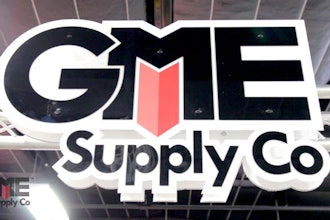WASHINGTON (AP) — New orders for large manufactured goods dropped last month. But excluding the volatile transportation sector, orders rose by the most since the recession began.
The report is the latest sign that the once-battered manufacturing sector is helping drive the economic recovery. U.S. factories are benefiting from overseas sales and a sharp increase in business spending.
The Commerce Department said Friday that new orders for durable goods, or those expected to last three years, dropped 1.3 percent in March. Analysts expected a 0.3 percent increase, according to a survey by Thomson Reuters.
Excluding transportation, new orders rose 2.8 percent, much more than economists forecast and the most since December 2007.
The overall figure for new orders was pulled down by a decline in aircraft orders, which plummeted by 67 percent. Airplanes are a volatile category; orders rose 134.9 percent in January and 32.7 percent in February.
The Boeing Co. said Wednesday it delivered 108 aircraft in the first quarter, down by 11 percent from 121 deliveries in the first quarter of 2009.
Outside the aircraft industry, the gains were broad-based. Orders for computers and electronic products rose 3.4 percent, the most since February 2009, while demand for machinery jumped 8.6 percent, the most since September of last year.
Auto and auto parts orders rose 2.5 percent, compared with a 1 percent drop the previous month. The U.S. auto industry reported healthy sales gains in March due to temporary federal tax incentives.
Overall, business spending on capital goods such as computers and machinery jumped by 4 percent, more than many economists forecast and the second straight increase. Business investment has been a critical factor in the recovery, as consumers haven't spent as freely as in previous recoveries.
Companies are also increasing their inventories, the report showed, though at a modest pace. Rising inventories can be a sign of confidence in future sales. Stockpiles of durable goods rose 0.2 percent in March, the department said, the third straight monthly gain.
After slashing their inventories during the recession to bring them in line with much lower sales, companies are replenishing their warehouses. That shift boosts production and accounted for about two-thirds of the economy's 5.6 percent growth in last year's fourth quarter.
The government will release next Friday its first estimate of gross domestic product, the broadest measure of the economy, for the January-to-March quarter. Economists forecast it will show growth of 3.5 percent, according to Thomson Reuters.


















